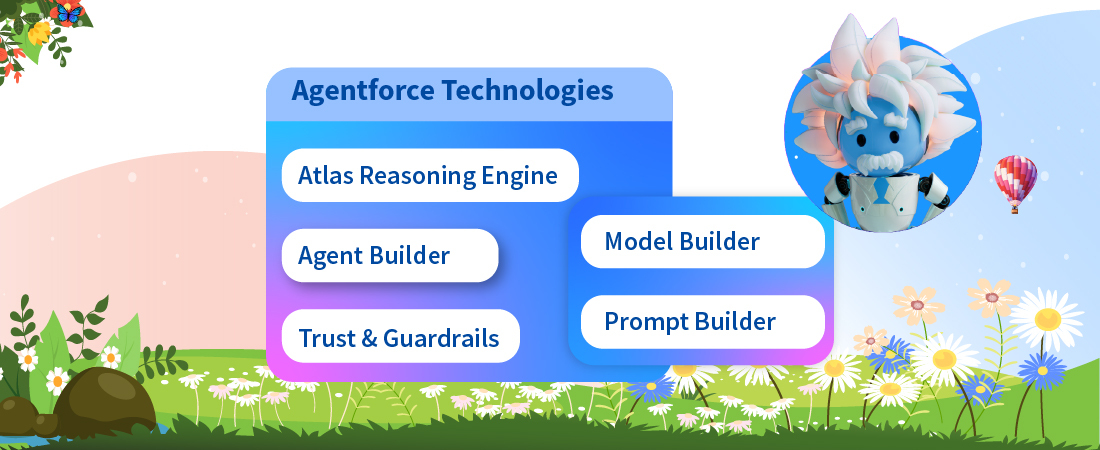Organizations today generate vast amounts of data and must find a way to leverage it to extract astute business insights. Data-driven organizations make sounder decisions and establish better relationships with stakeholders. As customer data grows in volume, relying on intuition or outdated data exploration tools makes it impossible to derive actionable intelligence.
Salesforce offers users smart business IQ, allowing organizations to thrive on the power of data. For instance, it integrates with other applications to report on the effectiveness of a marketing campaign, the interest level of a lead etc. Sales executives receive message alerts if a lead has visited the website with the time spent on different pages. While the lead is still interested, sales reps can offer them free whitepapers or other resources relevant to their interest. Salesforce makes such invaluable data-driven intelligence possible, giving marketers and sales reps real-time insights into customer behavior. Salesforce offers a variety of tools that enable businesses to analyze, control and review almost every aspect from one condensed and customizable platform. Let’s take a look at them to understand how the platform enables data-driven business intelligence.
Data-driven business insights with Einstein
Spotting trends and correlations using conventional ways is not feasible. To address the challenges of data exploration, Salesforce introduced Einstein Analytics, powered by artificial intelligence. It offers contextually relevant, self-service analytics apps that help extract insights from data. The analytics tool learns from available data, delivering predictions and recommendations, and automating recurring tasks. Businesses can improve decision making with insights for smarter customer interactions without writing code or deploying algorithms. What makes Einstein Analytics so powerful is the fact that its products suite includes analytics apps for every department, in every industry.
Einstein uses machine learning to detect statistical trends and patterns and deliver this information to users in a comprehensive manner, capabilities that make it far superior to human data scientists. By analysing billions of data combinations and evaluating different scenarios, it recommends the best course of action. Users can stay updated with the latest data, unearth insights, and take instant action from any device. Einstein Analytics thus allows users to accelerate sales, improve customer service, and optimize marketing campaigns. Its powerful algorithms deliver insights that allow executives to make decisions 38% faster.
For instance, a salesperson using Salesforce Einstein Analytics gets comprehensive insights on a customer, competitor, and pipeline data with recommendations on the right time to set meetings, strategy inputs etc. With a dynamic dashboard, sales reps can visualize business data to close deals and accelerate conversions.
Salesforce Reports and Dashboards
Salesforce also offers excellent reporting functionality, using analytics to drive business. With real-time sales data available on dashboards, organizations get real-time information visibility that is crucial to refining processes and getting an at-a-glance assessment of the business. Salesforce offers a powerful suite of business IQ reports:
- Profitability Reports: These reports enable businesses to select and prioritize their customer base, focusing resources on high-profit customers and revising contracts with the other end of the spectrum. They break down the sources of revenue, comparing them with the cost of client acquisition and servicing. They also indicate the largest contributor by prospecting the client database. Such insights are evidently useful for boosting revenue
- Sales Cycle Reports: These reports give an in-depth view of the process of acquiring a new lead and closing them as a customer for each individual account.
- Pipeline Report: Especially beneficial for sales managers for insight into which leads are open and the most promising.
- Sales Forecasting: Using the sales cycle and pipeline reports, a sales forecast is compiled which can predict future sales and growth rates over different intervals such as weekly, monthly or quarterly.
- Conversion Reports: Conversion reports provide a look into the ROI of different campaigns and the performance of different employees of the sales team.
- Goal Progress Reports: Once all the other reports are compiled, the goal progress report shows the total revenue collected and deals made and compares it to the goals set for the fixed interval it regulates.
Manually compiling such reports and analyzing them can be both a timely and costly endeavour for sales departments. Salesforce’s built-in applications to do the work for sales reps, leaving them with time to focus on actual conversions.
Salesforce’s dashboards bring all data together, giving users a glimpse of the current status of work. Dashboards can be customized to view a real-time summary of reports, allowing for quick analysis of the latest information and identification of key trends, a powerful tool for a data-driven organization.
Moving from intuition to data-driven insights
In the digital era, marketers generate a huge quantity of data every day which is an untapped strategic resource for companies. Businesses can stay competitive by using this data to study market trends and shifts in real time, getting an edge over competitors who rely on legacy solutions and would thus be slow to respond to changes. With Salesforce’s powerful capabilities, organizations can move away from outdated, intuition-driven insights to data-driven analysis that delivers compelling business results.






